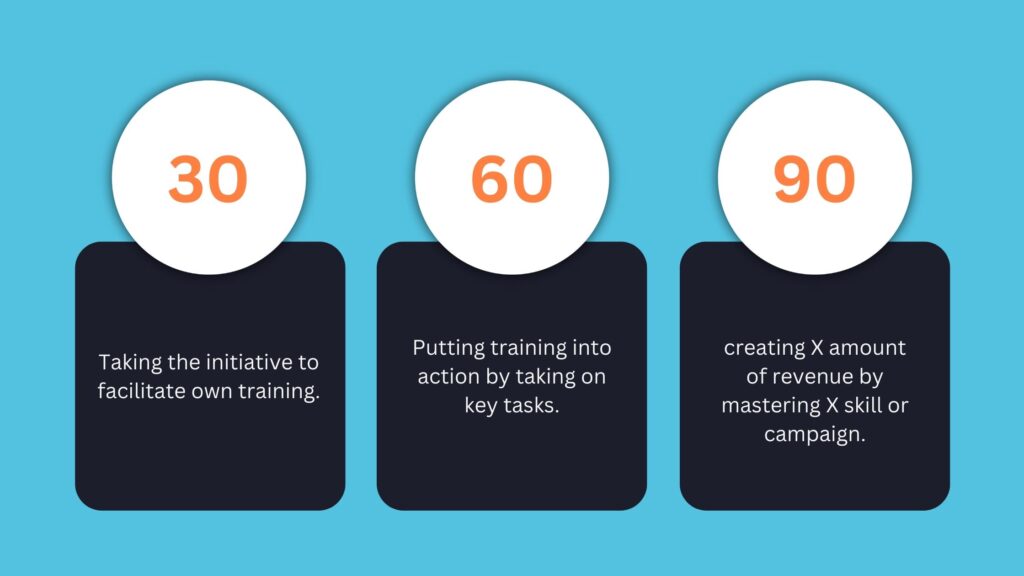Starting a new job as a developer? Don’t let the first 90 days make or break your experience! Learn how to navigate your first three months on the job with a tailored 30-60-90 day plan designed to help you integrate into the company, become familiar with the company culture, and become a productive employee quickly.
In the error of knowledgeable workers, especially within the tech industry, occupying new roles every year internally and externally has become commonplace. Developing your technical expertise without being in the field is quite hard. But learning from various company tech stacks, products, cultures, and processes allows you to implement the acquired experience-based knowledge in each role effectively.
Developer onboarding refers to the procedure in which the newly hired developers are integrated into the organisation. Onboarding usually includes undertakings that allow new developers to conclude an initial new-hire orientation process. The new developers learn about the company, its structure, vision, values, mission and culture during the onboarding process. This procedure usually takes about one to two days to be completed well for some companies. Other companies may involve many activities spanning one to two or three months. Onboarding new developers requires considering their viewpoints and outlining the best possible experience to get the new teammates absorbed and contributing quickly. Onboarding recruits at a company should be a strategic procedure for at least a year. HR and staffing specialists say how employers or managers handle the first days and months of a new employee’s experience is vital in guaranteeing high retention. That is why crafting a successful 90-day onboarding plan is essential. Not only that but also the expenses of discovering and onboarding a developer replacement is high.
The 90-Day Plan

A 30-60-90 day plan defines the first 90 days of a recruit’s employment. It acquaints them with the organisation’s policy, goals and mission. This action plan helps the new developers check essential items as they adapt to their new work environment. After finalising the company developer onboarding process, create time and send your boss an email. This email aims to discuss what he expects from you and ask any questions to help you generate a plan to accomplish what is expected from you. Usually, the first month begins with learning the product and knowing your teammates.
The First 30 Days

Software development calls for collaboration and technical debates as you develop solutions to tackle various challenges together, and a strong team bond aids the process.
The first 30 days usually involve in-depth training for the job role. During this period, you learn as much as you can about the company policies, structure, duties, and tools. Have conversations with your team members like how they joined the company, their areas of expertise, or life outside work. Here are some of the things you must do during these 30 days.
- Establish your priorities. Identify and fully comprehend your preferences and how your role will support them. When starting and operating remotely, in this situation, it means ensuring that you get access to all the tools you need to execute your duties.
- Learn the coding standards, workflow frameworks and programming process, and how your team structures its work environment.
- Study the organisation’s specific platform and intranet systems and accomplish the company’s training classes.
- Learn the company’s product. In these 30 days, make sure you study all the ins and outs of the product you and your team will be working on. It’sThrough learning about the product you can contribute to its development.
- Set up the local environment. During the onboarding session, the duties of the team are minimal. Utilise this time to set up and organise your local space. This increases your productivity.
The First 60 Days

During this period, you’re almost entirely comfortable with the office environment and adequately understand the company’s culture. In these next 30 days, you have to put what you learned from the first 30 days into action by engaging in new tasks and building on the foundation you established in the first 30 days. As a new developer in the company, this is the time you must align your focus more on collaboration and begin transitioning to the company’s regular routine and work plan. Focus on the undermentioned actions to help you blend in just right.
- Become acquainted with the codebases. After focusing on knowing your team and how it operates, the following step is to understand the codebases controlled by the team. Code bases differ in size and being well conversant with all their features takes quite some time. The first step is to comprehend the overall flow, patterns and directory structure of the projects within the team’s GitHub.
- Collaborate more with the team. This depends on the position you’re sometimes taking. If you’re offered a full-time job, you’ll speed up most of your working time with the team. Start attending regular team meetings to increase bonding, strengthen engagement and promote encouragement. During these frequent meetings, lay down goals to be achieved through collaboration.
- Discover challenges, issues and weak points within the tasks. Develop and implement solutions to address the problems. During the second month, you’re already aware of the company’s operation, so you should be able to draw out particular issues that the company is dealing with at the moment. Preferably, these issues directly affect your roles and provoke you to implement the skills and awareness you’ve acquired during the onboarding process.
- Check-in with your manager or supervisor. You’re now conversant with your daily responsibilities after sorting out and settling in the office. Schedule a meeting with your manager to discuss your plan for the first three months. During this exchange of views, both of you must acknowledge what procedures you have to utilise to ensure the implementation of your plan.
The First 90 Days

Now that you’ve learnt the fundamentals of the code you are to work on, it’s time to take on more complex features. The last 30 days of the onboarding process are about empowerment and independence. It would help if you were comfortable operating independently on more outstanding and long-term projects at this stage. Implement the following actions to drive development and stimulate individual growth.
- Set up development plans. As an onboarding developer, you’ll prosper under health and constant development and engagement. Create an employee development plan for yourself to identify the steps required to hit your goals and targets within the company. This plan will assist you in staying focused and committed to growth.
- Now that the onboarding process is about to end and you’re on your way to working independently evaluate your progress and generate a scorecard to rate your performance so far. By now, you should be able to accomplish a self-evaluation that will be compared to the company’s scorecard to provide a well-balanced frame of reference.
- Become proactive and more involved in the company’s operations. Being proactive as a new hire usually calls for self-motivation, innovation and problem-solving. When fellow employees feel supported at work, it drives results and increases engagement and productivity.
- Keep in touch with your manager for feedback about goals, metrics, and key performance indicators.
Tailoring Onboarding to Different Audiences

Regardless of their status or level, all employees have to go through some onboarding process since it’s how a company portrays its culture, regulations, and guidelines for all workers. However, this procedure can be adjusted to meet the varying needs of different employees. Modifying your company’s onboarding program is an opportunity to meet the employee value proposition you promised the employees during recruitment.
Managers. Employees taking up managerial and supervisory positions will require a review of the workers’ handbook and organisation policies. And a plan of action and the particulars on how to manage and drive these several policies and programs should be provided. As part of their managerial duties, these employees must learn how to train employees, especially new hires. This assists employers make good on their employee value proposition.
Executives. For executive onboarding to succeed, there has to be determined integration. This involves helping the new leader align with stakeholders, meet team members and create relationships with them, go through and complete administrative requirements and acquire the tools necessary for their role.
Remote Employees. New hires working remotely will require enlightenment on how daily check-ins will be managed. Details on utilising work equipment for personal purposes, time monitoring, privacy and communication issues should be given. Discuss in full detail with your new remote hires such as the behaviour expected from them to fit in the organisation.
Conclusion
The onboarding process is essential to any company as it helps new hires be integrated into the organisation. It involves activities that assist employees in concluding the new-hire orientation process and learning about the company’s culture, structure, vision and mission. Implementing a 90-day onboarding plan increases employee engagement while ensuring that new hires understand their duties, responsibilities, and expectations. Organisations with engaged employees have higher chances of driving customer satisfaction and limiting errors.


